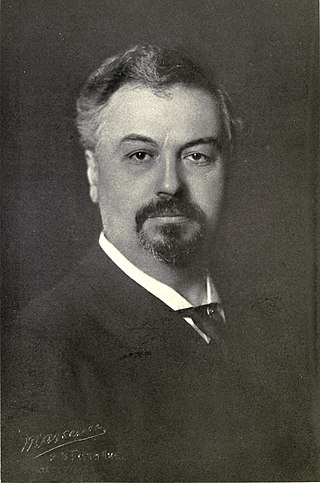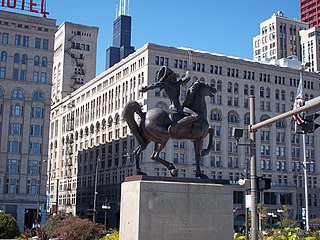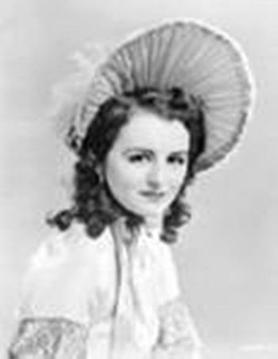Related Research Articles

The Metropolitan Opera is an American opera company based in New York City, currently resident at the Metropolitan Opera House at Lincoln Center, situated on the Upper West Side of Manhattan. The company is operated by the non-profit Metropolitan Opera Association, with Peter Gelb as the general manager. The company's music director has been Yannick Nézet-Séguin since 2018.

Oscar Hammerstein I was a German-born businessman, theater impresario, and composer in New York City. His passion for opera led him to open several opera houses, and he rekindled opera's popularity in America. He was the grandfather of American playwright/lyricist Oscar Hammerstein II and the father of theater manager William Hammerstein and American producer Arthur Hammerstein.

Santa Fe Opera (SFO) is an American opera company, located 7 miles (11 km) north of Santa Fe, New Mexico. After creating the Opera Association of New Mexico in 1956, its founding director, John Crosby, oversaw the building of the first opera house on a newly acquired former guest ranch of 199 acres (0.81 km2). The company has presented operas each summer festival season since July 1957, and is internationally known for introducing new operas as well as for its productions of the standard operatic repertoire. Five operas are presented each season during the summer.

Joseph Louis Wilfrid Pelletier, was a Canadian conductor, pianist, composer, and arts administrator. He was instrumental in establishing the Montreal Symphony Orchestra, serving as the orchestra's first artistic director and conductor from 1935 to 1941. He had a long and fruitful partnership with the Metropolitan Opera in New York City that began with his appointment as a rehearsal accompanist in 1917; ultimately working there as one of the company's conductors in mainly the French opera repertoire from 1929 to 1950. From 1951 to 1966, he was the principal conductor of the Orchestre Symphonique de Québec. He was also a featured conductor for a number of RCA Victor recordings, including an acclaimed reading of Gabriel Fauré's Requiem featuring baritone Mack Harrell and the Montreal Symphony Orchestra and chorus.

San Francisco Ballet is the oldest ballet company in the United States, founded in 1933 as the San Francisco Opera Ballet under the leadership of ballet master Adolph Bolm. The company is currently based in the War Memorial Opera House, San Francisco, and effective December 2022 under the direction of Tamara Rojo. It is among the world's leading dance companies, presenting more than 100 performances annually, with a repertoire that spans both classical and contemporary ballet. Along with American Ballet Theatre and the New York City Ballet, San Francisco Ballet has been described as part of the "triumvirate of great classical companies defining the American style on the world stage today."

The Manhattan Opera Company was an opera company based in New York City. Active from 1906 until 1910, it was founded by Oscar Hammerstein I.

Cleofonte Campanini was an Italian conductor and violinist. As a teenager he had a brief but successful career as a concert violinist in Italy and in theaters in Berlin and London. He abandoned the violin in favor of pursuing a career as a conductor, making his conducting debut in 1880 at the age of 20. He established himself as an opera conductor in Parma in the early 1880s, conducting several works which starred his brother, the tenor Italo Campanini.

Natalie Bodanya was an American operatic soprano who had an active international career from the late 1920s through the 1940s. She notably sang at the Metropolitan Opera in New York City from 1937 through 1942 and was a performer with the New York City Opera during the company's 1943-1944 inaugural season.
Herbert Pope Stothart was an American songwriter, arranger, conductor, and composer. He was nominated for twelve Academy Awards and won Best Original Score for The Wizard of Oz. Stothart was widely acknowledged as a prominent member of the top tier of Hollywood composers during the 1930s and 1940s.

Two grand opera companies in Chicago, Illinois, have gone by the name Chicago Grand Opera Company during the first half of the 20th century. Like many opera ventures in Chicago, both succumbed to financial difficulties within a few years, and it wasn't until 1954 that a lasting company was formed in the city.

The Metropolitan Opera House is a historic opera house and current pop concert venue located in Philadelphia, Pennsylvania. It has been used for many different purposes over its history. Now known as The Met, the theatre reopened in December 2018, after a complete renovation, as a concert venue. It is managed by Live Nation Philadelphia.
Sylvan Levin was an American concert pianist and conductor. He served as the assistant conductor of the Philadelphia Orchestra and the New York City Symphony under Leopold Stokowski for many years. He also founded the Philadelphia Opera Company in 1938, serving as its director for six years.
George Britton was an American singer, actor, and guitarist. A classical bass-baritone, he had an active performing career in operas, concerts, and musicals during the 1930s through the 1960s. As a stage performer he is best known for succeeding Roger Rico in the role of Emile de Becque in the original Broadway production of Rodgers and Hammerstein's South Pacific. He portrayed the role for two years opposite Martha Wright as Nellie Forbush, and for a few weeks opposite Cloris Leachman.
Leonard Treash was an American bass, opera director, and educator. As a performer he sang leading opera roles throughout the United States under such conductors as Fritz Reiner, Leopold Stokowski, Artur Rodzinski, and Erich Leinsdorf. He was particularly active as a performer with opera companies in Philadelphia, and is especially remembered as the long time director of the opera program at the Eastman School of Music, a post he held for nearly 30 years. He also served as General Director of Chautauqua Opera for 10 seasons and was the first President of the National Opera Association from 1955-1956.

Frances Greer was an American soprano. A leading performer at the Metropolitan Opera and the Philadelphia Opera Company, she recorded 13 albums, mostly musical operettas with RCA Victor, and made several concert appearances at Carnegie Hall. For many years she was the featured singer on CBS’s Friday evening radio program, Musicland USA.
Brenda Lewis was an American operatic soprano, musical theatre actress, opera director, and music educator. She enjoyed a 20-year-long collaboration with the New York City Opera (NYCO) with whom she notably created roles in several world premieres by American composers; including the title role in Jack Beeson's Lizzie Borden in 1965. She also performed with frequency at the Metropolitan Opera from 1952 to 1965, and was active as a guest artist with notable opera companies both nationally and internationally. Although she is mainly remembered as an exponent of American operas and musicals, she performed a broad repertoire of works and was particularly celebrated for her portrayals of Marie in Wozzeck, Rosalinde in Die Fledermaus, and the title roles of Carmen and Salome; the latter of which she performed for the inauguration of the Houston Grand Opera in 1956.
John Bailey McElfatrick (1828–1906) was an architect known for his design of theaters in the United States and Canada. He eventually went into practice with his sons William H. McElfatrick and John Morgan McElfatrick (1853-1891) in the firm J. B. McElfatrick & Sons.

Annamary Dickey, also known as Annamary Dickey Laue, was an American soprano and actress in operas, operettas, musicals, night clubs, and concerts who had an active performance career from the 1930s through the 1960s. She began her career as a regular performer with the Chautauqua Opera and the St. Louis Municipal Opera in the mid to late 1930s. In 1939 she won the Metropolitan Opera Auditions of the Air which earned her a contract with the Metropolitan Opera (Met). She was a soprano in mainly secondary roles at the Met from 1939 to 1944; appearing in productions of Gluck's Orfeo ed Euridice, Massenet's Manon, Delibes' Lakmé, Charpentier's Louise, Bizet's Carmen, Der Rosenkavalier by Richard Strauss, Mozart's The Marriage of Figaro, and Smetana's The Bartered Bride. Her most significant role at the Met was as Musetta in Puccini's La bohème. A strikingly beautiful woman with a passion for fashionable clothes, she gained the moniker the "Glamour Girl of the 'Met'" and headlined a fashion campaign for Saks Fifth Avenue in 1945.
Selma Amansky, also known by her married name Selma Caston or Selma Amanky-Caston, was an American soprano and voice teacher. She had a brief but prominent career in Philadelphia in the late 1930s and early 1940s; performing frequently with the Philadelphia Opera Company and the Philadelphia Orchestra. She was married to the conductor Saul Caston who was principal conductor of the Denver Symphony Orchestra from 1945-1964. After he left this post, the couple resided in Winston-Salem, North Carolina where Selma taught on the voice faculty of the University of North Carolina School of the Arts for thirteen years.
Barbara Thorne, also known by her married name Barbara Stevenson and as Barbara Thorne Stevenson, was an American soprano who had an active performance career from 1930 through 1959. She made her professional singing debut in 1930 as a soloist with the Portland Symphony Orchestra while an undergraduate music student at Pacific University. She performed in several more oratorios with that orchestra in the 1930s. She continued to perform professionally while pursuing further vocal studies at the Curtis Institute of Music in Philadelphia from 1935-1938 where she was a pupil of Harriet van Emden and Estelle Liebling. She was a leading soprano of the Philadelphia Opera Company from 1939-1942, and also performed with other American opera companies during the 1940s and 1950s. She also worked as an oratorio soloist, mainly in the cities of Philadelphia and New York City, but also on stages throughout the United States. In 1939 she recorded Wolfgang Amadeus Mozart's Requiem with the Philadelphia Orchestra for RCA Victor. In the 1950s she taught on the voice faculties of the University of North Texas and Southern Methodist University.
References
- ↑ "Sylvan Levin, 93; Championed Music In Philadelphia". The New York Times . August 16, 1996. Retrieved July 2, 2009.
- ↑ Free Library of Philadelphia: Folder: Philadelphia Opera Company 1938-1944
- ↑ "Two Operatic Novelties: Philadelphia Company Is Heard by a Large Audience". The New York Times . February 12, 1941.
- ↑ Eddy (February 11, 1942). "Concerts-Opera: PHILA. BOW FOR TAYLOR OPERA". Variety . Vol. 145, no. 10. p. 33.